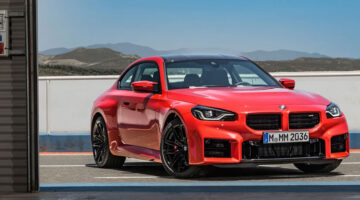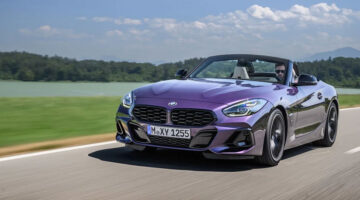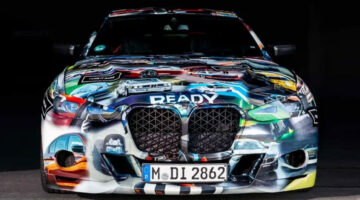BMW goes behind the scenes to explain the design and the ideas behind its 100th anniversary celebration, the Vision 100 concept.
[Not a valid template]
Following the unveil of Vision 100 – a concept celebrating the company’s 100th anniversary – BMW has now launched a video explaining the ideas and design that have gone into it, including some that might may their presence felt on future BMW models. “The Vision is something very special for us,” explains Head of BMW Design Karim Habib. “We’re not just thinking about form and shapes, we’re thinking about how the brand can evolve.”
Effectively with the Vision 100, the Bavarian Motor Works has celebrated 100 years “not by looking back, but by looking forwards”, akin to the i Vision Future Interaction Concept that made its debut at the Consumer Electronics Show. With that in mind, BMW Vision 100 is just one of four similarly-themed concepts to be launched across the BMW Group board, including sister brands MINI, Rolls-Royce and the BMW bike division. For Rolls-Royce by the way, the upcoming Sanctuary will be the first ever concept in the brand’s history.
The bodywork constructed from carbon fibre and plastic in a deliberate attempt to move away from steel. Visually similar to the i8 (though 10mm shorter and 100mm lower than the 5 Series), the Vision features enclosed wheels, no B-pillars, and wing style doors that open automatically as the driver approaches the car. Among the most notable elements though – as part of the ‘autonomous’ nature of the Vision 100 – is the Alive Geometry system, which allows the bodywork to flex and effectively change shape as the vehicle is moving along via 800 moving triangles set into the side panels.
[Not a valid template]You might reasonably expect that SkyNet is only a few years away, particularly since BMW is adamant Alive Geometry will prove key to interior design in the future. The Vision’s cabin for example focuses on, what Habib refers to as, the “digital world and the analogue working together to create a seamless experience.” Traditional touchscreens and buttons for instance have been removed in favour of digital information stored on the smart key and a head-up display across the length of the windscreen, while the seats can swivel towards each other to ease conversation in the cabin. Much like the flexible bodywork, the steering wheel – in a very cool touch – slides out of the dashboard as the powertrain starts.
Furthering the idea of autonomous driving, BMW has foregone its traditional Eco, Normal and Sport driving modes in favour of just two, Ease and Boost: “Ease is when you don’t want to concentrate fully on the act of driving; Boost is for those moments when you want your typical BMW driving experience.” We’re still being kept in the dark with regards the powertrain, the only confirmation being that it is ‘emission free’.
Source – BMW



